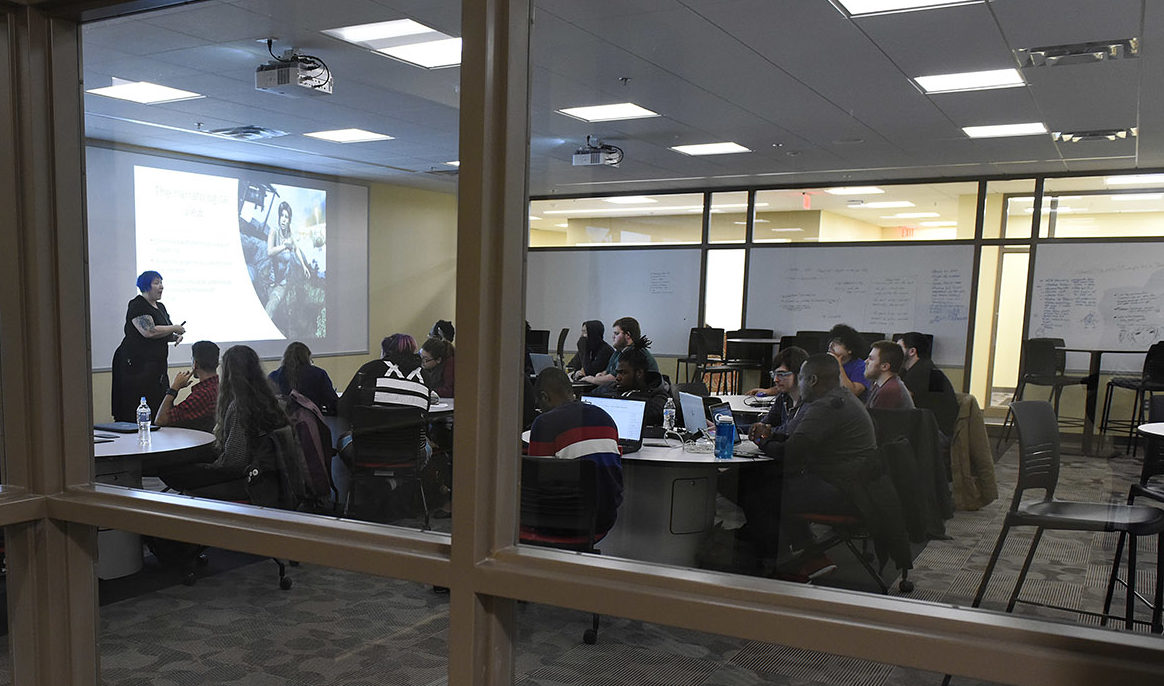
Loans
Student loans can help you cover your college expenses, especially when used alongside other forms of financial aid.
Explore your options for federal and private loans below, then schedule a financial planning session at Harrisburg University.
Federal Loans
Direct Student Loans
There are two types of Federal Direct Student Loans: subsidized and unsubsidized. The direct subsidized loan is interest-free while the student is in school, and is awarded based on financial need. Interest accrues on the unsubsidized loan while the student is enrolled in school. The borrower may opt to pay it as it accrues, or allow it to accrue and capitalize. The direct unsubsidized loan is a non-need based loan program.
The maximum subsidized Federal Direct Student Loan per academic year is $3,500 for freshmen, $4,500 for sophomores, and $5,500 for juniors and beyond. Dependent students may borrow and additional $2000 unsubsidized per year. An independent student may borrow an additional $6,000 per year as a freshman and sophomore, and an additional $7,000 per year as a junior and beyond.
Federal PLUS Loans
Direct PLUS loans are available for parents of undergraduate students through the federal government. A parent may borrow up to the cost of attendance less any other financial aid received. Repayment begins 60 days after this loan is fully disbursed.
A graduate or professional student is eligible to borrow under the Direct PLUS Loan Program up to their cost of attendance minus other estimated financial assistance in the Federal Direct Loan Program. The terms and conditions applicable to Parent PLUS Loans also apply to Graduate/Professional PLUS loans. The requirements include a determination that the applicant does not have an adverse credit history. Repayment begins on the date of the last disbursement of the loan. The student must have applied for the annual loan maximum eligibility under the Federal Unsubsidized Direct Loan Program before applying for a Graduate/Professional PLUS loan.
Alternative Education Loans
An alternative education loan, or private student loan, is a student loan that is made by a private lending institution such as a bank or credit union. These loans are credit-based, meaning the lending institution would require the credit approval of the borrower and co-borrower (if applicable). These loans can be used to pay for education-related expenses (up to cost of attendance minus other aid received) for a specific academic year or term of enrollment. Please note that loan interest rates, conditions, and eligibility requirements will vary by lender.
Students and families that are eligible are generally advised to pursue all federal financial aid opportunities before turning to a private lender. Eligible students and families should always start the financial aid process by filling out a Free Application for Federal Student Aid (FAFSA) to help determine federal grant and loan eligibility prior to applying for any private student loans. If you need assistance in determining which financing option may be the best fit for you, please contact the Financial Aid Office and we would be happy to assist you.
Harrisburg University does not have a preferred-lending list for private student loans, meaning we do not have any established agreements with private student loan lenders. However, we understand you may need assistance in locating potential private lenders. Therefore, we utilize ELMSelect to list our historical lenders in an easy to compare format.
We do not endorse any specific lenders listed nor do we accept any payment from these lenders to be included on this list. You are also not limited to lenders on this list; you are free to apply with any eligible private student loan lender even if not listed.
International students should be advised that not all lenders listed above lend to international students. For those that do, a cosigner who is a U.S. citizen or permanent resident will likely be required.
Please visit ELMSelect to search for and compare lenders.
Next Steps
Loan Entrance Counseling
If you have not previously received a federal loan, the government requires you to complete loan entrance counseling. To start, you’ll need the FSA ID, school name and details on your income, financial aid and living expenses.
Tuition Calculator
Undergraduate students can use our net price calculator to estimate their financial aid options. You’ll need your estimated family contribution or a close estimate of your family income to get started.

More to Explore
Scholarships
We consider every first-year student for a university-funded scholarship. Transfer student scholarships start at $6,000.
Grants
Each year we award hundreds of thousands of dollars to those who facilitate groundbreaking research projects.